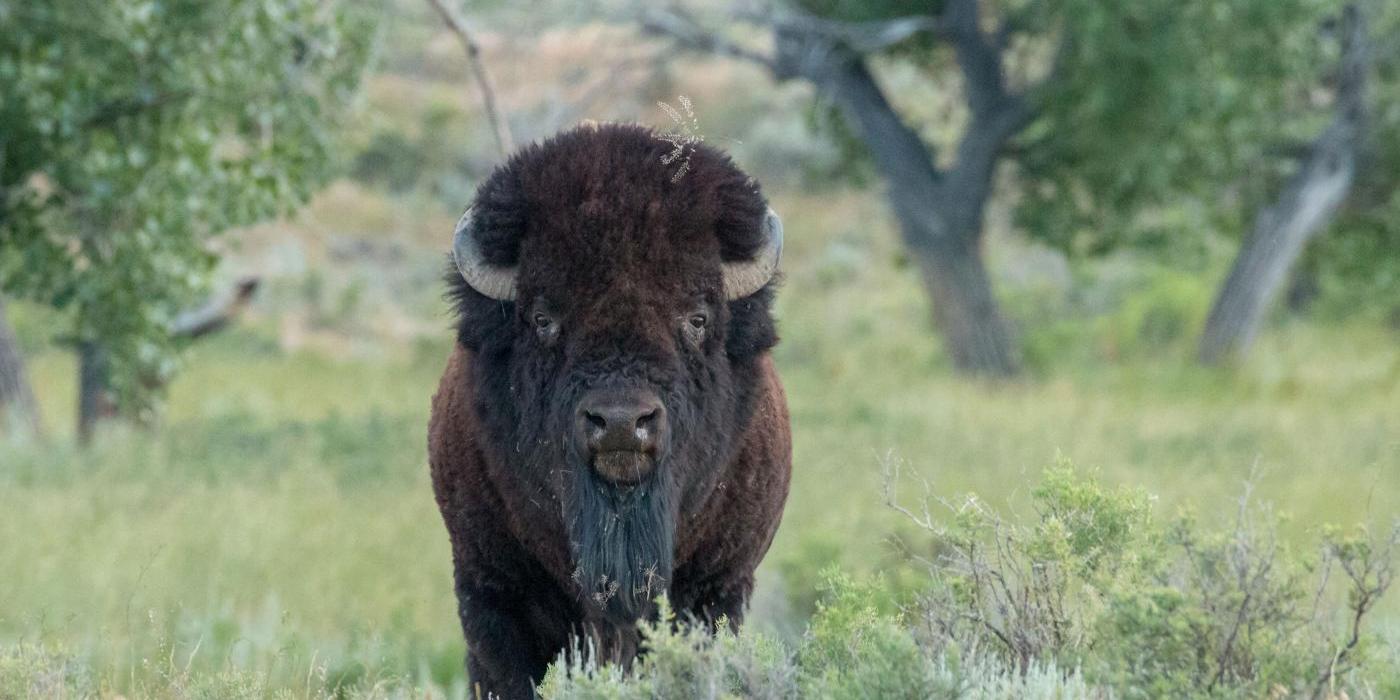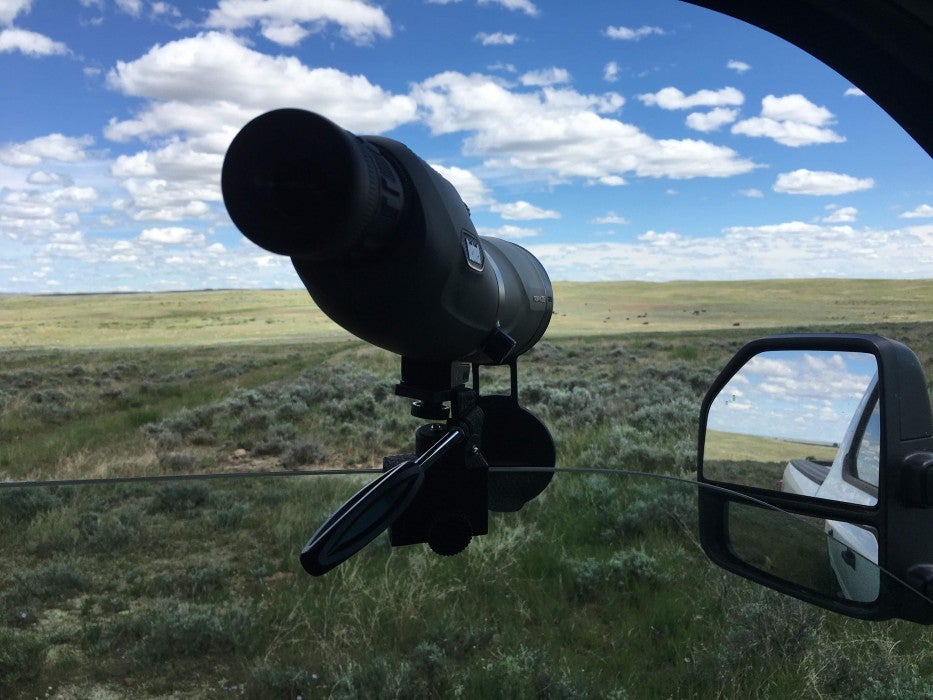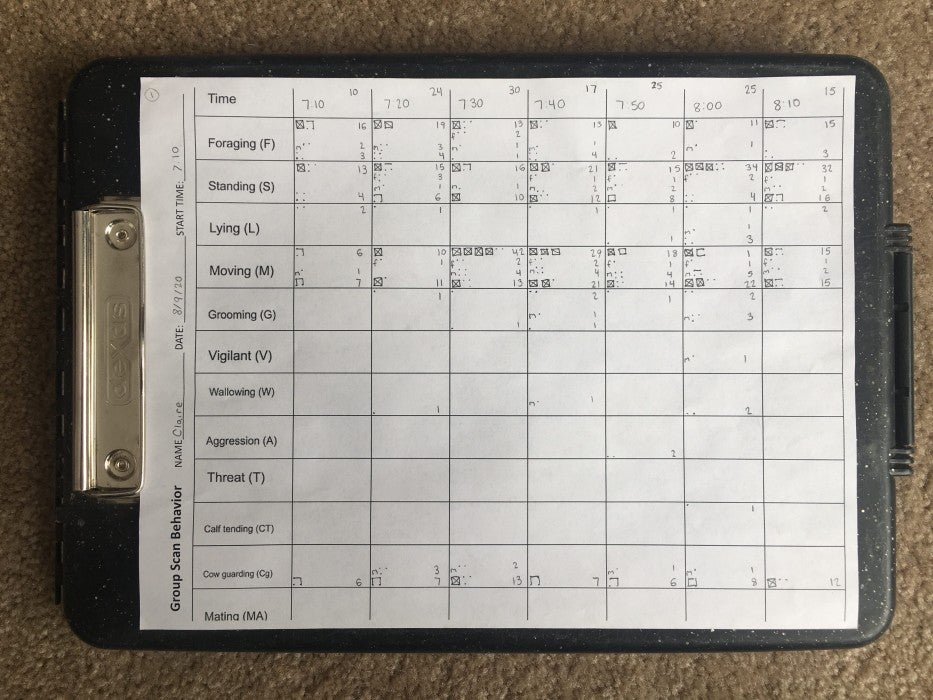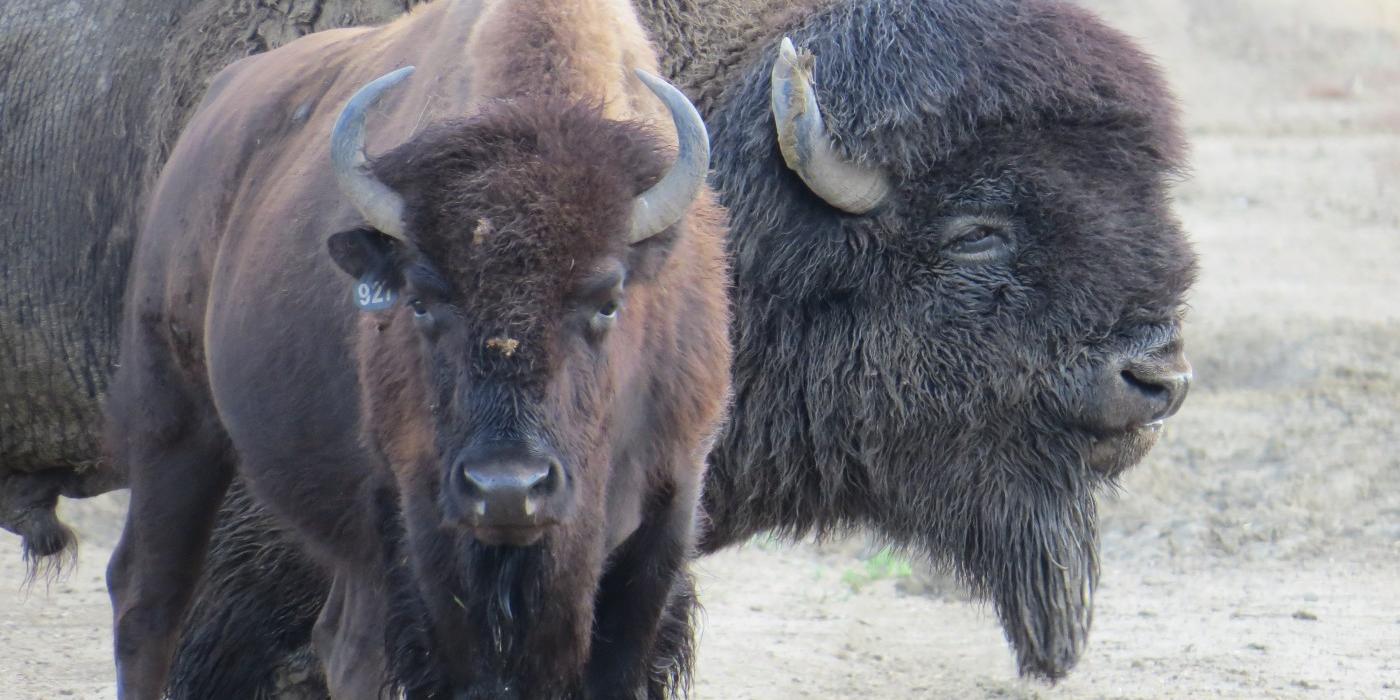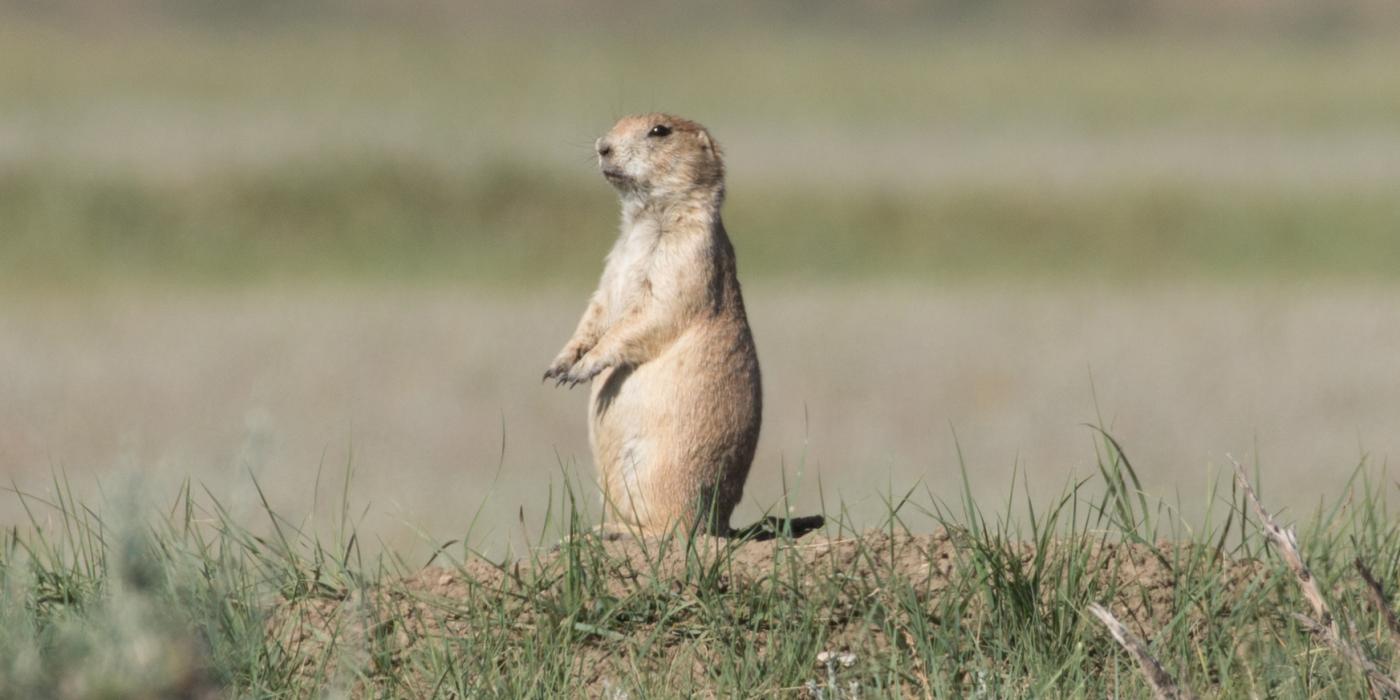I Spent the Summer Studying a Herd of Bison, And Here’s What I Learned
Spending your days with a herd of bison is an idyllic way to pass a summer. I would know, because most of my days from May to August were spent observing the behaviors of a herd of about 300 bison in Montana. I’m an intern with the Smithsonian Conservation Biology Institute’s Northern Great Plains program, a collaboration with American Prairie Reserve. For the last six months, I have worked with SCBI and the Reserve to study bison behavior.
This is my second internship with SCBI since I graduated from college in 2019. My first was at SCBI headquarters in Front Royal, Virginia, where I contributed to eMammal camera trapping projects and studied how deer browsing (eating small shrubs and plants) impacts forest vegetation. I have always had a passion for behavioral ecology, the study of the relationship between an animal’s behavior and their environment, so I was excited to hear that SCBI ecologist Hila Shamon was looking for interns in Montana. A few months later, I was driving down the long, bumpy dirt road leading to the field house.
On an average day, we would head out to find the herd of bison, binoculars in hand. Eighty of the bison at the Reserve are equipped with GPS ear tags, and more will be tagged this winter. An app on our phones showed us their most recent locations, and we would drive across the prairie to meet them. We settled in around 200 meters (650 feet) from a large bison group, far enough away that we could see them but without stressing them or influencing their behavior. At the beginning of the season, female bison with their newborn calves in tow were wary of our truck, but they grew accustomed to our presence over time.
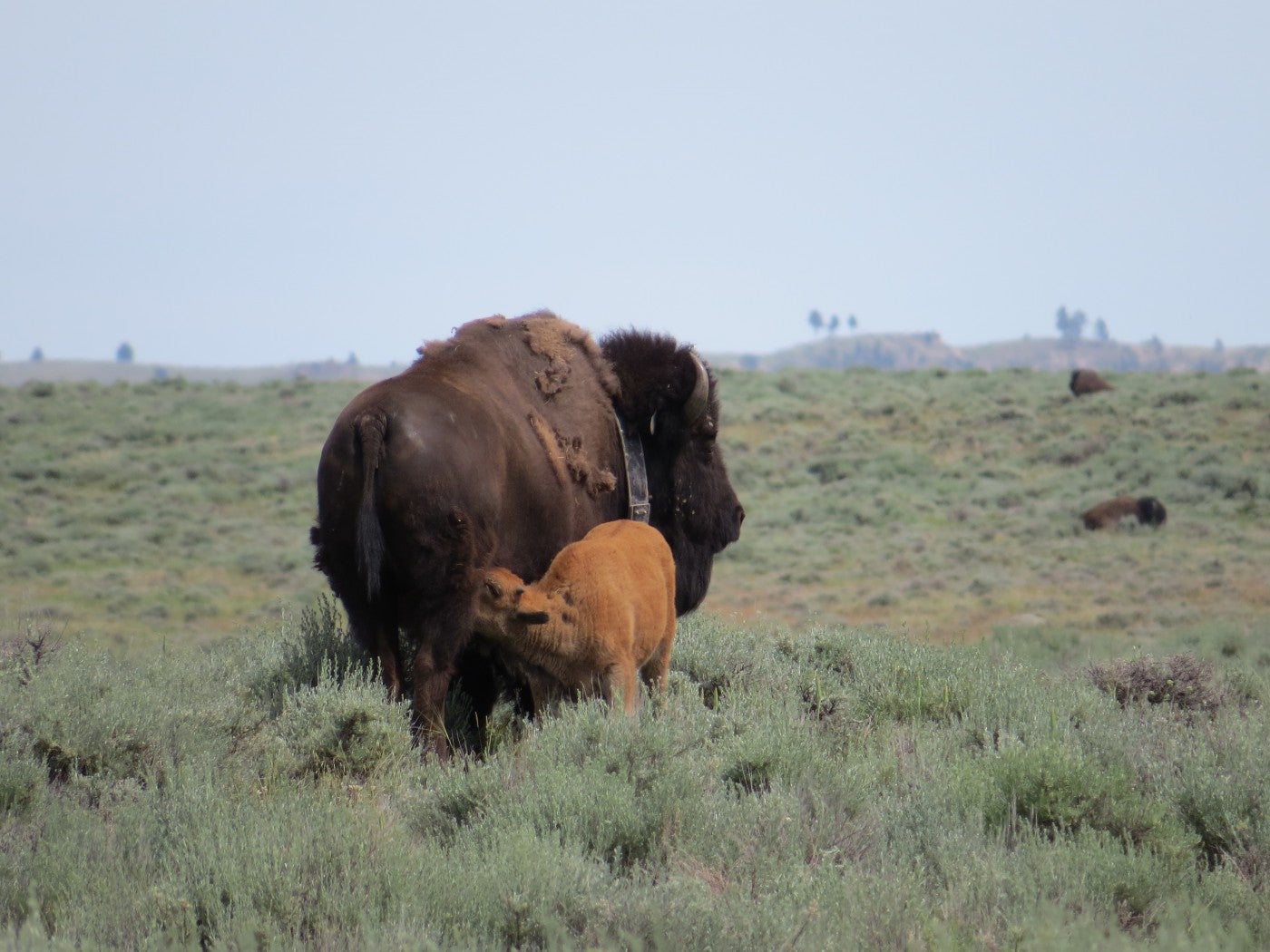
Every 10 minutes, I would conduct a group scan, calling out the behavior of each individual I could see. We used something called an ethogram to track the bison behaviors we saw. The ethogram is a list of 12 bison behaviors that we were likely to see, categorized into mutually exclusive terms, such as foraging, standing, lying and wallowing (rolling in the dirt). My fellow intern tallied up the numbers of each behavior, which were also grouped by bison age and sex. Some days we called out more than a hundred bison behaviors at a time, our sheets crowded with tick marks.
These data will help us understand how bison spend their time and to what degree their groups act in unison. During the 19th century, the U.S. government encouraged mass hunting of bison as a commercial enterprise and as a tactic in the war against tribes of the Great Plains. As many as 60 million bison were killed. Because their populations were decimated, there are many unanswered questions about how bison behave in large groups.
There are many recorded instances of animals showing collective behavior — one individual’s actions impacting those around them — such as the migration of caribou or the flocking of birds. We want to know which bison have the most significant impact on the herd’s movement or behavior, and identify the factors that explain their influence. To understand this, we first have to understand the basics of how bison spend their time.
Over the 98 hours we spent watching the herd, we recorded group behavior 660 times, each scan including an average of 60 individual bison. The data show us how bison behavior changes throughout the summer. At the end of spring, females were mainly in small groups tending to young calves. Bachelor groups and lone males were spread across the Reserve. By July, the bison were aggregating in large open areas for the mating season, known as rut.
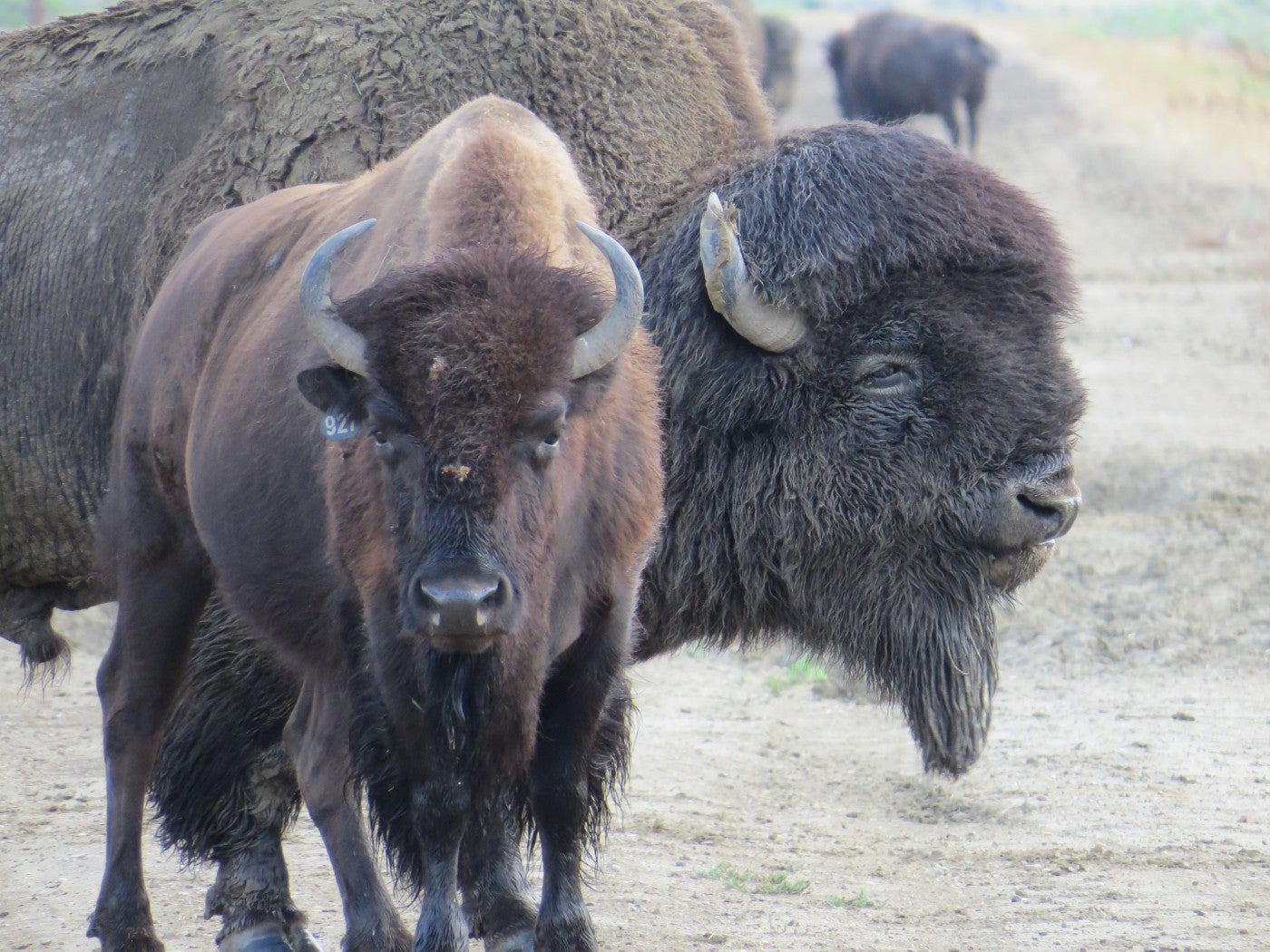
A male bison stands close behind a female, guarding her from potential competitors during rut.
During rut, the once quiet prairie was filled with male bison bellows, low sounds that travel far for females and potential competitors to hear. Pillars of dust rose into the air as the bison wallowed, rolling in the dirt. Males would sometimes urinate on the ground before wallowing, covering themselves with their pheromones. Both male and female bison wallow throughout the year to deter flies and shed fur, but there was a notable increase during rut. Males stood guard next to females, following them wherever they went and chasing away competitors.
Perhaps the most notable feature of rut, however, was the aggression between males. Male bison would run and bash into each other, sometimes breaking ribs and severely injuring each other.
It will take more field seasons of observations to fully uncover how bison influence each other’s behavior, and this year’s baseline data will help inform what observations we collect in the future. During my graduate studies, I’ll continue to explore bison behavior with SCBI and Montana State University to learn how genetics, behavior and landscape influence bison movement. I plan to collect more behavioral data, along with movement and genetic data, to determine which factors have the greatest influence on bison social organization. Understanding the mechanisms that determine how bison decide to move on the prairie can help improve how we manage and protect them.
Related Species:
